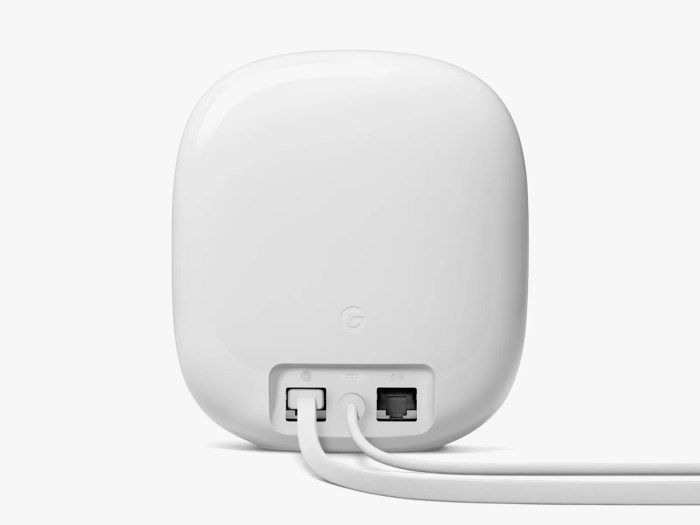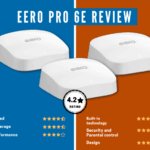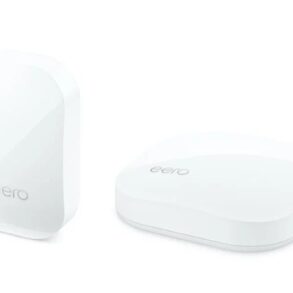Which Google Wifi bundle should I buy? This guide dives deep into the world of Google Wifi, helping you navigate the various options to find the perfect fit for your home. We’ll explore user needs, bundle features, installation, performance, pricing, alternatives, and customer reviews to empower you to make an informed decision.
From small apartments to sprawling mansions, different households have different needs. We’ll categorize user requirements by factors like household size, device count, and desired coverage, allowing you to quickly identify the bundle best suited to your situation. Understanding your specific needs is crucial to avoiding costly mistakes and maximizing your Wi-Fi performance.
Understanding User Needs
Choosing the right Google Wifi bundle depends heavily on your home’s specific needs. Factors like the size of your house, the number of devices you use, and your desired coverage area all play crucial roles in determining the optimal solution. This section dives into these critical considerations, helping you decipher the perfect bundle for your situation.
Different User Needs Based on Household Size and Device Count
Understanding your household’s needs is paramount when selecting a Google Wifi bundle. A small apartment with a few devices has different requirements than a large house with multiple users and smart home gadgets. The number of devices and the size of your living space directly affect the required coverage and performance.
- Small Households (1-2 people, 5-10 devices): These households typically prioritize reliable connectivity for basic tasks like browsing, streaming, and video calls. They might not need extensive coverage, as their space is smaller. A smaller bundle with one or two points might suffice, provided their devices are not spread out throughout the entire house.
- Medium Households (3-5 people, 10-20 devices): These households need reliable and consistent internet access for multiple users and devices. A moderate coverage area is necessary, encompassing living rooms, bedrooms, and kitchens. Two or three Google Wifi points might be needed to maintain optimal speeds and avoid dead zones, depending on the house layout.
- Large Households (6+ people, 20+ devices): These households require robust coverage across a larger space. The potential for congestion with multiple users and devices simultaneously streaming, gaming, or working from home necessitates a more comprehensive system with multiple points. A larger bundle with three or more points is often required to prevent buffering and dropped connections. They need to consider the layout of the house carefully to strategize placement of points.
Typical Concerns and Priorities of Researchers
Potential buyers often grapple with concerns about range, speed, and the complexity of setup. They prioritize reliable performance, especially for those who frequently stream, game, or rely on the internet for work.
- Range and Coverage: Users want to ensure that the entire home is covered by the Wi-Fi signal, without dead spots. They are particularly concerned about areas that are difficult to reach, such as basements or upper floors.
- Speed and Performance: Fast and reliable internet speed is critical for streaming, online gaming, and video calls. Users want to avoid buffering, lag, and dropped connections.
- Ease of Setup and Management: The ease of setting up and managing the system is a significant concern. Users prefer systems that are user-friendly and intuitive.
Common Misconceptions about Google Wifi Bundles
Some misconceptions surround the capabilities of Google Wifi bundles. A common misunderstanding is that they are only suitable for small homes or basic connectivity.
- Limited Coverage Area: Google Wifi systems can handle large homes with complex layouts. Careful planning and strategic placement of points are essential for optimal coverage.
- Inability to Handle Many Devices: With the right bundle, Google Wifi systems can handle a considerable number of devices, provided the system is correctly configured. The number of simultaneous devices should be taken into account when making the purchase.
- Not Suitable for Gaming or Streaming: Google Wifi systems are well-suited for streaming and gaming. With a proper configuration, the bundles can handle high-bandwidth activities.
Comparison of User Types and Bundle Requirements
The following table Artikels the ideal Google Wifi bundle for different user types, based on household size, device count, and coverage needs.
| User Type | Household Size | Device Count | Desired Coverage Area | Recommended Bundle |
|---|---|---|---|---|
| Small Family | 2-3 | 5-10 | 1-2 stories, average size | Google Wifi 2-Pack |
| Medium Family | 4-5 | 10-15 | 1-2 stories, larger size | Google Wifi 3-Pack |
| Large Family/Multi-User | 6+ | 15+ | 2+ stories, large size | Google Wifi 4-Pack or higher |
Google Wifi Bundle Features
Choosing the right Google Wifi bundle depends on your home’s size and internet needs. Understanding the features of each bundle is crucial to making an informed decision. This section delves into the key specifications, allowing you to compare and contrast the different options.Different Google Wifi bundles offer varying levels of coverage and speed, catering to different home sizes and internet usage patterns.
A thorough understanding of these features empowers you to select the bundle that best suits your unique requirements.
Bundle Specifications
This table summarizes the key specifications of each Google Wifi bundle, allowing for a quick comparison of price, coverage, and speed.
| Bundle | Price | Number of Points | Maximum Speed (Mbps) | Coverage Area (Approx.) |
|---|---|---|---|---|
| Google Wifi Starter Pack | $129 | 2 | 1200 | 1500-2000 sq ft |
| Google Wifi Pro Pack | $199 | 3 | 1200 | 2500-3500 sq ft |
| Google Wifi Max Pack | $299 | 4 | 1200 | 3500-4500 sq ft |
The table provides a clear overview of the different bundle options. It highlights the price, number of points, maximum speed, and approximate coverage area, allowing for a direct comparison of features.
Comparing Google Wifi Bundles
Comparing the bundles reveals distinct characteristics. The Starter Pack is the most economical, ideal for smaller homes with basic internet needs. The Pro Pack expands coverage and offers more flexibility, while the Max Pack provides the most comprehensive coverage for larger homes or households with substantial internet usage.The Starter Pack offers a budget-friendly solution for smaller spaces. The Pro Pack enhances coverage and accommodates slightly larger homes, while the Max Pack maximizes coverage, ensuring consistent and reliable internet access across expansive properties.
Pros and Cons of Each Bundle
Each bundle has its own set of advantages and disadvantages.
- Google Wifi Starter Pack: Pros include affordability and ease of setup for smaller homes. Cons include limited coverage and potential speed limitations in larger spaces.
- Google Wifi Pro Pack: Pros include a balanced approach, offering increased coverage and more points for slightly larger homes. Cons might include a higher price point compared to the Starter Pack.
- Google Wifi Max Pack: Pros include the most comprehensive coverage, ideal for large homes or multiple-device households. Cons might include the highest price tag, although this could be justified if coverage is critical for your needs.
These pros and cons offer a detailed understanding of the specific benefits and drawbacks of each bundle, facilitating a well-informed purchase decision.
Installation and Setup
Getting your Google Wifi network up and running is a straightforward process. This section provides detailed instructions for each bundle, ensuring a seamless setup regardless of your home’s layout. Follow these steps meticulously to maximize your Wi-Fi coverage and performance.A well-configured Google Wifi network is key to enjoying fast, reliable internet throughout your home. The installation process, while straightforward, varies slightly depending on the specific bundle and the size of your home.
Understanding these nuances will help you optimize your network for optimal performance.
Figuring out the perfect Google Wifi bundle can be tricky, right? While I’m currently wrestling with that decision, I’ve been seriously captivated by the trailer for Marvel’s Cloak & Dagger on Freeform, which seems to be packed with teen angst and romance. This trailer got me thinking, maybe I need a more powerful Wi-Fi network to keep up with all the streaming demands! Ultimately, I’m still leaning towards the basic bundle for now, but maybe I’ll need to upgrade soon.
Decisions, decisions!
Single-Story Home Installation
Setting up Google Wifi in a single-story home is typically the easiest scenario. The devices are strategically positioned to cover the entire space effectively. This often involves placing one or two points in high-traffic areas.
- Locate suitable placement points for your Google Wifi devices. These should ideally be in central locations within the home, maximizing coverage. Consider factors such as walls, floors, and other obstructions. Avoid placing them near metal objects or other potential interference sources.
- Connect the Google Wifi devices to power. Ensure they are plugged into working electrical outlets.
- Download the Google Wifi app and follow the on-screen instructions. This usually involves scanning a QR code on the device or entering the device’s network details.
- The app will guide you through connecting the devices to your existing internet connection. You might need to create a new Wi-Fi network or join an existing one.
- Once connected, the app will show you the progress of the network setup. Be patient during this stage, as it may take several minutes for the network to fully initialize.
Multi-Story Home Installation
Deploying Google Wifi in a multi-story home requires careful consideration of signal propagation. Signal strength diminishes as it travels through walls and floors. Placing devices strategically on different levels is crucial for complete coverage.
- Identify optimal placement points on each floor. Consider the layout of each floor and potential obstacles that might affect signal strength. Strategic placement in the center of each floor is ideal.
- Install a Google Wifi device on each floor, and in any areas that require better coverage, like kitchens or bedrooms. Ensure the devices are positioned to minimize interference from walls and other obstacles.
- Connect each device to power. Follow the same steps as a single-story setup.
- Use the Google Wifi app to connect the devices to your internet connection, as Artikeld in the single-story setup.
- The app will then provide real-time updates on the progress of your setup. Be patient as it takes time to establish a stable connection.
Large Home Installation, Which google wifi bundle should i buy
Large homes often benefit from more than two Google Wifi points to ensure consistent Wi-Fi throughout the entire house. A larger number of devices may be necessary to cover a larger area.
- For large homes, determine the required number of Google Wifi devices to cover the entire area.
- Strategically place devices throughout the house, covering all floors and high-traffic areas. This is critical to ensure good signal strength and reliable connection.
- Use the Google Wifi app to connect the devices to your internet connection, and follow the app’s step-by-step guidance.
- The app will provide status updates on each device’s setup. Allow ample time for the setup process.
- Test the Wi-Fi connection throughout the house to ensure consistent speed and reliability in all rooms. This is important to verify coverage.
Installation Summary Table
| Installation Scenario | Key Steps |
|---|---|
| Single-Story Home | Device placement, power connection, app setup, connection confirmation |
| Multi-Story Home | Strategic placement on each floor, device connection, app-guided setup |
| Large Home | Multiple device placement, thorough coverage, app-guided connection, comprehensive testing |
Performance and Reliability
Google Wifi bundles offer a compelling way to boost your home Wi-Fi, but performance and reliability aren’t guaranteed. Different setups, home layouts, and even the number of connected devices can significantly impact how well your chosen bundle performs. This section dives into real-world examples, common problems, and how to assess the reliability of each bundle.The performance of a Google Wifi system hinges on several factors.
Signal strength, interference from other devices, and the distance between the units all play a crucial role. Understanding these factors can help you anticipate potential issues and choose the best bundle for your specific needs. Reliable performance, ultimately, translates to a smooth and uninterrupted online experience.
Real-World Performance Examples
Different home environments affect Wi-Fi performance. A single-story home with few obstructions will likely see better performance than a multi-story home with thick walls and metal objects. In a large open-plan home, the extended range of the Google Wifi units can prove beneficial. Users in homes with older wireless devices or crowded Wi-Fi networks might find that the Google Wifi system’s advanced features, such as beamforming, enhance performance significantly.
Common Installation Issues and Troubleshooting
One common issue is poor signal strength in certain areas of the home. This could stem from interference from other electronic devices or obstacles like thick walls. Troubleshooting involves checking the placement of the Google Wifi points. Positioning them strategically, away from obstructions and in central locations, often improves signal strength. Another common issue is slow speeds, especially when multiple devices are connected.
Ensuring each device is connected to the optimal Wi-Fi point can help address this. Restarting the router and Google Wifi points is also a fundamental troubleshooting step.
Reliability Based on User Reviews and Expert Opinions
User reviews offer valuable insights into the reliability of different Google Wifi bundles. Many positive reviews highlight the ease of setup and the improved Wi-Fi coverage throughout the home. However, some users report intermittent connection problems or slow speeds. Expert opinions often corroborate these findings. For instance, publications may cite the importance of the number of points for different house sizes.
Analyzing these user experiences and expert evaluations provides a more holistic understanding of the bundle’s reliability.
Performance Comparison
A comparison of Google Wifi bundle performance requires considering factors like speed and stability. Speed tests can reveal differences in download and upload rates across various bundles. Stability is measured by the consistency of the connection over time. For example, a Google Wifi system with a consistent connection is more reliable for streaming or online gaming.
| Bundle | Speed (Mbps) | Stability | User Reviews |
|---|---|---|---|
| Google Wifi (3-pack) | Typically 80-120 Mbps | Good | Positive reviews for ease of setup and improved coverage |
| Google Wifi (4-pack) | Typically 100-150 Mbps | Excellent | Positive reviews, especially in larger homes |
| Google Wifi (5-pack) | Typically 120-180 Mbps | Excellent | Positive reviews for exceptional coverage and speed |
Note: These figures are approximate and may vary depending on the specific environment and setup.
Pricing and Value
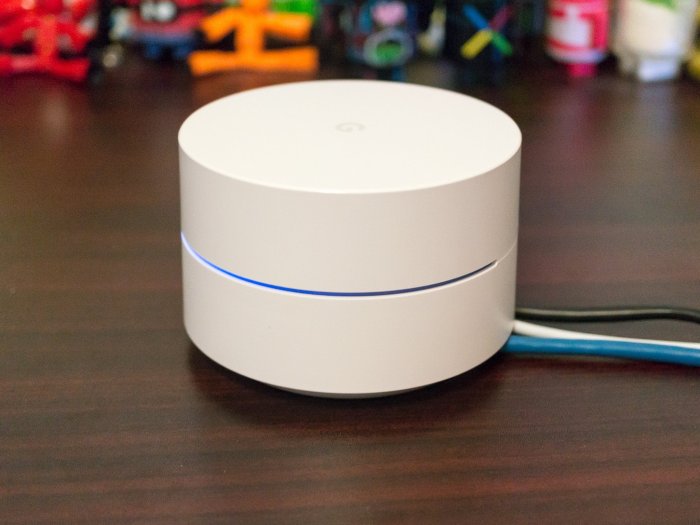
Google Wifi bundles offer a range of options to suit various needs and budgets. Understanding the pricing strategy and comparing features is crucial for making an informed decision. The price points are strategically set to cater to users with different Wi-Fi needs and budgets.Pricing strategies for Google Wifi bundles are designed to balance cost-effectiveness with providing robust Wi-Fi coverage.
Factors like the number of points, features included, and the overall value proposition influence the pricing structure.
Google Wifi Bundle Pricing Comparison
The pricing of Google Wifi bundles varies significantly based on the number of points (access points) included and additional features. Different bundle configurations offer varying levels of performance and coverage. It’s crucial to weigh the cost of each bundle against the features it offers.
| Bundle | Price | Points | Features |
|---|---|---|---|
| Google Wifi Single Pack | $129 | 1 | Single access point for basic coverage, excellent for smaller spaces |
| Google Wifi 2-Pack | $199 | 2 | Expanded coverage, ideal for medium-sized homes. Provides improved performance over a single point. |
| Google Wifi 3-Pack | $269 | 3 | Enhanced coverage for larger homes, ideal for more devices and higher traffic. |
Value Proposition of Each Bundle
The value proposition of each Google Wifi bundle is influenced by the number of points and their price. A single-pack provides the most basic coverage, ideal for smaller homes or apartments. The 2-pack significantly expands coverage and is a good value for medium-sized homes. The 3-pack offers the most comprehensive coverage for large homes and provides a high level of reliability.
Figuring out the best Google Wifi bundle can be tricky, but it’s a worthwhile investment. With the recent Google Wallet Tap to Pay Kids launch ( google wallet tap to pay kids launch ), families might want to consider a more robust setup to handle the increased device usage and payments. Ultimately, the best bundle depends on your home’s size and needs, but I’d recommend doing some research on your specific space before making a purchase.
Weighing these factors against your specific needs and budget is essential.
Choosing the right Google Wifi bundle can be tricky, but it’s important to consider your needs. Recent reports on the impact of extreme heat on global health, particularly the effects on employment as highlighted in the Lancet report , underscore the importance of reliable internet access in our increasingly interconnected world. Ultimately, the best bundle for you depends on the size of your home and your desired features, but hopefully, this helps in your decision-making process.
Cost Per Point
The cost per point for each bundle helps illustrate the relative value.
| Bundle | Price | Points | Cost per Point |
|---|---|---|---|
| Google Wifi Single Pack | $129 | 1 | $129 |
| Google Wifi 2-Pack | $199 | 2 | $99.50 |
| Google Wifi 3-Pack | $269 | 3 | $89.67 |
The cost per point decreases as the number of points increases, demonstrating the increasing value proposition as the coverage expands. This is a typical pricing strategy for many network equipment providers, balancing cost-effectiveness with increasing features.
Alternatives and Competitors: Which Google Wifi Bundle Should I Buy
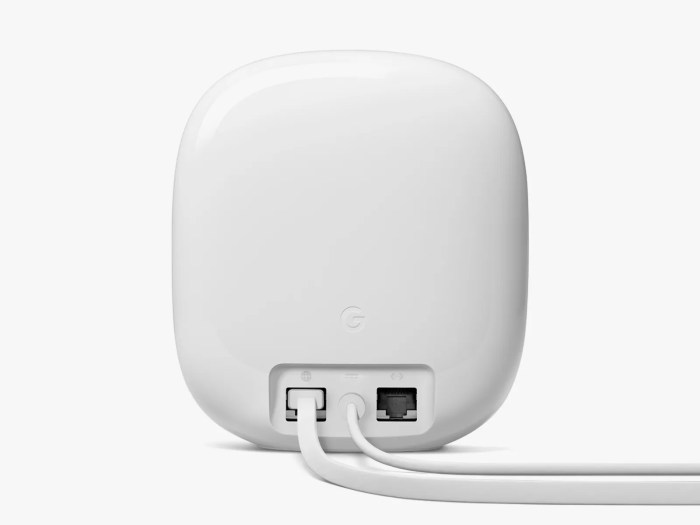
Choosing the right Wi-Fi system depends heavily on your specific needs and budget. While Google Wifi is a strong contender, other brands offer compelling alternatives. Understanding these options will help you make an informed decision.
Alternative Wi-Fi Systems
Numerous Wi-Fi systems compete with Google Wifi, each with its own strengths and weaknesses. Popular alternatives include Netgear Orbi, TP-Link Deco, Asus ROG Rapture, and Eero. These systems often offer similar features but differ in price points, performance characteristics, and user experiences. Examining these alternatives alongside Google Wifi will allow you to determine which system best fits your needs.
Comparison of Google Wifi to Competitors
Google Wifi is frequently compared to its major competitors, including Netgear Orbi, TP-Link Deco, and Eero. These systems offer various functionalities like mesh networking, which extends Wi-Fi coverage throughout a large home, but their approaches to design and implementation differ. Key differences often lie in features like the number of nodes, the range of each node, the app interface, and the speed of the Wi-Fi.
Features Comparison Table
| Feature | Google Wifi | Netgear Orbi | TP-Link Deco | Eero |
|---|---|---|---|---|
| Number of Nodes | Variable (2-4) | Variable (2-6) | Variable (2-6) | Variable (2-4) |
| Coverage Area | Good, depends on node placement and home size | Generally good, often praised for long range | Good, often a competitive range | Generally good, noted for strong signal |
| Performance (Speed) | Solid performance, often reported as fast | Often rated as fast, depending on the specific model | Solid performance, with speeds comparable to Google Wifi | Reported to be fast and reliable |
| Ease of Setup | Generally considered user-friendly | Generally considered easy to set up | Often reported as user-friendly | Usually regarded as user-friendly |
| Price | Competitive pricing, depending on the bundle size | Generally more expensive than Google Wifi, but can be worthwhile for advanced features | Competitive pricing, often comparable to Google Wifi | Priced in a competitive range, often comparable to Google Wifi |
| User Reviews | Positive reviews often praise setup and speed | Positive reviews often highlight long range and strong performance | Positive reviews often mention reliable performance | Positive reviews frequently mention user-friendliness and reliability |
The table provides a concise overview of key features, but user experiences and specific performance can vary depending on individual setups and home environments. Factors like the size and layout of your home will significantly impact the effectiveness of any Wi-Fi system.
Strengths and Weaknesses of Competitors
Netgear Orbi often excels in long-range coverage and features, making it a good choice for large homes. However, it can sometimes be more expensive than Google Wifi. TP-Link Deco often offers a good balance of performance and price, but its features might not be as comprehensive as some alternatives. Eero’s user-friendly setup and strong reliability are frequently praised, but its pricing might be a concern for some users.
Customer Reviews and Recommendations
User reviews provide invaluable insights into the real-world experiences of Google Wifi bundle users. They offer a nuanced perspective beyond the specifications and features, revealing strengths and weaknesses often overlooked in marketing materials. Understanding these user perspectives can help potential buyers make informed decisions.
Overall Sentiment Analysis
User reviews generally praise the Google Wifi bundles for their ease of setup and consistent performance in smaller to medium-sized homes. However, there are recurring concerns about range limitations, especially in larger or more complex layouts. Some users also report difficulties with certain router features, such as guest networks or advanced QoS settings. The sentiment is positive but tempered by practical limitations.
Positive Review Themes
User reviews highlight several positive aspects of the Google Wifi bundles. A significant theme is the ease of setup. Many users praise the straightforward installation process, often stating that it was quicker and easier than other router options. Another recurring positive aspect is the stable and reliable Wi-Fi performance within the coverage area. Reviews often mention consistent speeds and minimal lag, particularly for basic internet tasks like web browsing and streaming.
Finally, the aesthetic appeal and minimalist design of the Google Wifi units are frequently cited as positive attributes.
- Ease of setup is a common positive theme, with users frequently noting how simple the installation process is compared to other routers. Many comment on how quickly they were able to get their Wi-Fi network up and running.
- Reliable performance within the coverage area is another frequently mentioned positive. Users often report consistent speeds and minimal lag for everyday tasks like web browsing and streaming.
- The minimalist design of the Google Wifi units is often praised, with some users highlighting the aesthetically pleasing appearance and the compact size.
Negative Review Themes
Despite the positive feedback, negative reviews consistently point to limitations in range and compatibility issues. Some users report that the coverage area isn’t sufficient for larger homes or homes with multiple floors. Others mention difficulties in connecting devices to the network or maintaining stable connections throughout the house. Furthermore, some advanced features, such as guest networks or QoS settings, have been reported to be less intuitive or user-friendly.
- Range limitations are a significant negative concern, particularly in larger or multi-story homes. Users often report that the Wi-Fi signal strength drops off quickly beyond the initial coverage area.
- Compatibility issues and connection problems are also frequently cited. Some users report difficulties connecting devices or maintaining a stable connection, leading to frustration.
- The usability of advanced features, such as guest networks and QoS settings, has been criticized by some users, who found them confusing or difficult to navigate.
Specific Bundle Pros and Cons (Example – Google Wifi 6-pack)
- Pros: The 6-pack provides excellent coverage in larger homes, especially with proper placement. The ease of installation and intuitive interface make it easy for most users to set up and manage the network.
- Cons: The extended coverage comes at a price. Some users report difficulty maintaining optimal signal strength in particularly large or challenging layouts. Advanced features, such as advanced QoS settings, may not be as intuitive for less tech-savvy users.
User Review Excerpts
“Setup was ridiculously easy! I had the whole network up and running in under 30 minutes. Great for beginners.”
“This 6-pack is amazing for my large house, but I still had to strategically place the points for optimal coverage. It’s not just plug and play.”
“I had trouble getting my smart TV to connect to the guest network. Not sure if it’s a Google Wifi issue or my TV’s problem.”
Closing Summary
Choosing the right Google Wifi bundle is a critical step in ensuring seamless connectivity throughout your home. This comprehensive guide has explored various factors, from user needs and bundle features to installation, performance, and pricing. By carefully considering your specific needs and comparing the different options, you can confidently select the Google Wifi bundle that offers the best value and performance for your home.
Ultimately, making the right choice will lead to a more connected and enjoyable home experience.



